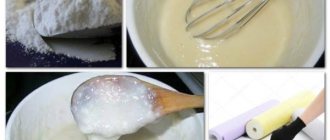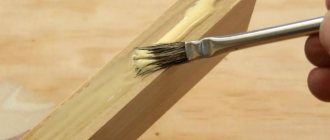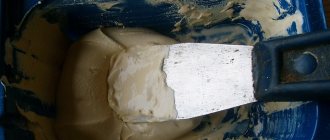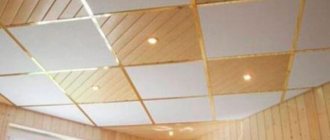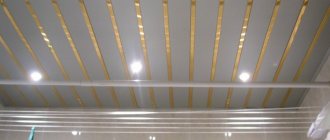How to use?
First of all, it is necessary to clean and degrease the surfaces on which the heat-conducting adhesive will be applied. This can be done using acetone, gasoline or alcohol. Next, an adhesive solution is applied to the prepared surface at the rate of no more than 1 ml of substance per 1 square centimeter. The parts are fixed and pressed for approximately 20-25 minutes. After this, some time is needed, namely 24 hours, to ensure strong adhesion of the elements. After a day, the item treated with glue can be used.
It is simply irreplaceable in cases where it is not possible to use heat-resistant pastes and substrates. You can buy it at virtually any radiator store, but if there is not one nearby, you can make heat-conducting glue with your own hands. This, of course, is not so simple, but it is quite possible.
Thermally conductive adhesive Stars-922
Several times already I came across situations where applying thermal paste was either inconvenient or impossible, since it requires constant pressing of the radiator to the component, and I decided to buy an equally useful thing, heat-conducting glue, for testing. Actually, today is a short review and, of course, a test, especially since I’ve already posted reviews of all sorts of thermal interfaces a couple of times. It’s not expensive, it doesn’t take up space on the table, but I heard that if it’s left for a long time it can dry out and, just in case, I chose a lot consisting of two tubes, although the seller has a lot of one piece.
I placed the order on May 5th of this year, but in the end these tubes lay idle, and then they found a job and decided to sketch out a short review along the way. Delivery took three weeks, so everything is fine here, in addition, the order included protection boards for 2S assemblies, but more on that another time.
The price in the store is constantly changing, at the time of writing the review it was 1.79, now it is 1.89, plus delivery, which is paid to us, is free to Russia.
According to the labeling, they were released either on May 3 or March 5, in any case fresh.
The tube is very small, the stated weight of the glue is 5g, together with the tube it comes out to 7.35g. I won’t say that it actually contains 5 grams, but it’s approximately similar. In the comments to the product there were complaints that the tubes are very small, personally, in my opinion, 5 small ones of 5 grams each are better than one of 25 since it is glue, and not just a paste. Under the lid there is a membrane that needs to be pierced and which prevents the contents from freezing prematurely.
The following parameters were stated on the store page: Thermal conductivity: > 0.671 W/Mk Tensile 1.5MPA Surface curing time 10 min./25 degrees
In addition, I came across a mention that the force required to open it is 25 kg/s, but checking all this is quite tedious and inconvenient, so I decided to limit myself to a short test.
To begin with, I took four RAM chips and glued them to an aluminum heatsink, applying approximately the same amount of glue. I wanted to glue a larger chip, but there was only one, so it was more convenient to test several small ones.
Then I tried removing the chips at intervals of one hour. The first one came off relatively easily, although mostly due to the fact that I pryed it off from one edge. The second and third were removed approximately the same way, I would not say that it was easy, like if you glued it through silicone sealant. The glue itself resembles a sealant, but is odorless.
The fourth chip was removed after about six hours and held up quite well.
But in fact, only the part that was squeezed out when pressing the chips is hard; under them the glue remained viscous; in the second place from the left, traces are visible; I tried to move it there with tweezers after removing the chip. Literally after 10 minutes everything hardens, because it turns out that in air hardening is fast, about 10-15 minutes, but where there is no air the process takes a very long time.
With the second test, I will check how well the glue conducts heat; for this I assembled a stand that has already participated in two of my reviews of thermal pastes and heat-conducting rubber. The stand consists of the same components as then, a power supply, two radiators, two resistors, a thermometer and a board.
I apply glue to the radiators. Here I will make a small digression. On the left is what I applied first, on the right - second, and I noticed that after the glue sits for at least a day or two, then first a white paste + some liquid comes out, if you press further, there is almost no liquid, and the consistency becomes more viscous. In general, the glue is relatively fluid and squeezing out excess is not difficult; it is clearly thinner than KPT-8 paste.
In general, one radiator would have been enough for me; I usually used two in comparisons, but here I decided to make a small comparison. On the left I applied the glue in a more liquid form, on the right it was thicker when the liquid part was partially gone. After that, I installed the resistors, pressed them with a weight and left them for three hours.
Since subsequent pressure is not needed, unlike thermal pastes, we remove the weight and move on to the test.
I set the power supply to the same 20 Watts as in previous tests, which, together with the same radiators and resistors, gives repeatable results for further comparison with other thermal interface options.
An hour later, I received the following results, where first there is the initial state, and then 6 measurements with an interval of 10 minutes, a total of an hour. Don’t be confused by the fact that the first radiator is a little hotter; there is a halogen table lamp not far from it, so it warms it up a little; the temperature difference is important.
But to compare the test results with KPT-19 and KPT-8 pastes, carried out a couple of years ago under the same conditions, in my opinion there is no difference. More tests can be seen in the corresponding reviews - Thermally conductive rubber K5 Pro or what to do if you don’t have thermal paste on hand
There I also tested silicone sealant, as well as many different options including... sunflower oil 
Briefly, in the form of tablets, something like this:
Various tests
Temperature difference, full tests in the links above.
And this was already coming as an addition
The thermogram shows approximately the same thing, and it is clearly visible why I pasted a piece of black electrical tape onto the radiator. Along the way, I looked at the power supply and noticed that it was heating up in one place, I’ll have to look at what’s heating up there.
In addition, I have already successfully used this paste for its intended purpose when modifying the cooling of a TV box.
Since the radiator was large and the chip was small, we had to apply paste to both the RAM and flash memory, although this is not correct.
And the actual result. About a day after gluing it and carrying out various tests, I tried to tear off the radiator and I can say that it is holding up very well. At least I applied more force than it can experience during actual use and even falls.
That's all for me, the results are in the tests, there are no comments to the seller, I think that I can safely recommend it for use where there is nothing to press the radiator with.
Thermally conductive adhesive "Radial"
This glue is the most popular among adhesives with a thermal conductive function. This is due to a number of undoubted advantages of the solution. Firstly, the glue is resistant to factors such as exposure to sunlight, changes in external natural conditions, and high air humidity (moisture- and water-resistant). Secondly, the adhesive solution has a high viscosity and provides a high degree of adhesion to materials such as glass, plastic, ceramics and even metal. Thirdly, Radial glue is very strong (tear strength 2.3 MPa or more). Plus, by using this adhesive, you don't have to worry about rust on your aluminum, steel, and silver parts.
The glue has high thermal conductivity and is resistant to truly enormous temperature changes. Its working area ranges from -60 to 300 degrees Celsius!
What is thermally conductive adhesive and what is it used for?
Heat-conducting glue is used to bond heated parts. It does not change its properties when heated and does not emit toxic fumes, which is why it can be used to connect parts that are subject to regular heating.
Another function of thermally conductive adhesive is heat dissipation. It contains particles that have higher thermal conductivity than air. The substance fills the space between two surfaces and provides heat removal. Usually this function is performed by thermal paste, but when it is necessary to fasten two elements, it is replaced with hot melt adhesive.
Thermal adhesive is sold in small tubes or tubes in liquid form. Before use, unscrew the cap and poke a hole in the protective membrane. Afterwards, the tube should be closed so that the substance does not dry out. Some brands, for example, AlSil, are sold in syringes, which makes application even more convenient - just squeeze a small amount of mass onto the surface.
Hot-melt adhesive is used to glue LEDs, processors, power transistors, microcircuits in switching power supplies, and in TV units with a kinescope to radiators. Areas of application:
Composition for ferrites
What are ferrites? These are chemical compounds that have some magnetic properties, due to which they are widely used as magnetic elements in radio transmitting and receiving devices, as well as automatic systems and computer technology. They are used to make antennas, memory parts, electromagnetic wave absorbers, as well as cores, permanent magnets and other parts. Given their wide range of applications, heat-conducting adhesive was created for them as well. Such solutions usually contain dimethacrylate or epoxy substances.
Terms of use
Any heat-conducting adhesive has its own rules of use, which you must know and apply in your work. So how do you use heat conductive glue? To do this you need:
- surfaces that will stick together must be thoroughly degreased using acetone, alcohol or gasoline;
- apply a small amount of adhesive to the surface;
- press the parts to be glued for about 25 minutes;
- Leave the parts at rest for about a day.
After 24 hours, the treated item can be used for its intended purpose. Thus, heat-conducting glue is simply necessary when working with radio and computer equipment. It is especially needed where it is not possible to use thermal paste: when installing radiators and other working parts. Given the high tensile strength, such adhesives are often used to fasten parts in a vertical position or on their side
But in order for the composition to show all its consumer properties, it is very important to strictly adhere to the instructions for use
Self-production
Conductive grease can not only be purchased ready-made, but also made with your own hands. However, before giving manufacturing instructions, it is necessary to answer a number of the most common questions among beginners:
- Is Moment glue capable of conducting electricity? No, none of the many variations of this adhesive are capable of conducting current.
- Is Superglue electrically conductive? To answer the question you need to understand the nature of conductivity. This type of substance does not contain components (metals, graphite) that conduct electricity. Thus, in terms of its capabilities, “Superglue” is almost identical to plastic.
- What about epoxy compounds? Epoxy resin does not transmit electricity for the reason stated above.
- Are high-voltage repairs using specialized glue allowed? No, such work is prohibited in accordance with safety regulations.
- I bought Kontaktol, but it does not give the desired effect. The reason is most likely that the product is counterfeit. The popularity of this brand has led to a large number of counterfeits.
- What is needed for the electrical conductivity of the composition? The adhesive must necessarily contain conductive components. Moreover, their specific gravity must be sufficient to ensure electrical conductivity.
Review of popular brands
When choosing a suitable thermal conductive solution, it is recommended to familiarize yourself with the most popular brands. Products from top manufacturers are valued for their high quality and strong connection of components.
Manufacturers produce several types of thermally conductive adhesives under different brands, including natural and synthetic ones. The latter additionally contain plasticizers, which makes them resistant to moisture and frost. Both types of solutions are used for installation work with metal, ceramic and glass products. The difference between natural and synthetic solutions is the quality of the composition and the final cost.
"Radial"
Radial brand adhesive solution is suitable for mounting LEDs and heat dissipation fittings to transistors and processors in situations where it is not possible to apply thermal conductive paste.
When applied, Radial glue provides stable and high-quality heat removal without losing its characteristics at a temperature range from -60 to +300 degrees. A distinctive feature of the products of this brand is their slow drying, which allows them to retain their plasticity for a long time after being squeezed out of the tube.
"AlSil"
Hot-melt adhesive "AlSil" is a modern composition for screwless installation of radiators, cooling systems and other structures where heat removal is required. Glue is often used on memory boards in laptops and system units.
The composition is supplied in a syringe weighing about 3 g, which makes it convenient to apply to a work surface. The AlSil solution is economical in consumption, since it can be applied in a thin layer from a syringe.
GD9980
Thermally conductive composition GD9980 is used to displace accumulated air between the surface of the chip and the base of the radiator. The heat dissipation property of this brand of glue is less compared to products from other manufacturers, but the GD9980 composition is capable of particularly firmly fixing parts on the processor, attaching radiators to motherboards, RAM slots and video card chips.
Description and purpose
Polyurethane is the basis of a product intended for fixing polystyrene foam boards. Using adhesive foam, the insulation boards are fixed to the internal and external walls of the house. No special skills are required to carry out installation work. A non-specialist can work with the construction product.
The composition of the adhesive foam includes additives that increase adhesion; it is several times higher than that of classic polyurethane foam. Scope of application of adhesive foam from:
- glue brick blocks;
- fasten facing slabs of stone and wood;
- fix plasterboard slabs;
- glue window sills indoors and outdoors;
- fix heat-insulating materials to the façade and foundation.
Adhesive foam is a new product. It was specially developed for gluing polystyrene and foam boards. Previously, products with cement binders were used for this purpose. Aerosol polyurethane foam is used for gluing different materials:
- cardboard;
- plywood;
- GVL;
- chipboard;
- drywall;
When using construction foam, work efficiency increases. Operation of the product does not require additional equipment, water consumption, or electricity costs. There is no dirt or dust at the work site.
How to apply thermal conductive glue?
The process of installing diodes using glue consists of several stages:
- Degrease all surfaces you will be working with using alcohol or acetone.
- Apply a small amount of thermal conductive glue to the surface of the part to be cooled.
- Using force, press the cooled part to the surface and try to make forward circular movements to evenly distribute the glue over the entire surface of the cooled part on the radiator.
- Fix the pressing for 3-4 minutes for better adhesion.
- Let the mixture dry. The glue hardens within 20 minutes, but complete drying occurs only after 24 hours.
Features of using thermally conductive glue
For a high-quality result, it is important to carefully prepare the surfaces. They must be cleaned of dust and other contaminants, and then degreased. For this purpose, acetone, alcohol, and less often gasoline are used. The filling material (glue) is distributed onto the base, making sure that there is about 1 ml of product per square centimeter of parts. Then the products are pressed, making circular movements so that the glue is evenly distributed. They need to be pressed for 3-4 minutes, and put into operation within a day.
Bonding the heatsink to the chip
The radiator is connected to the chip (microcircuit) in the same way as described above. How to glue the chip? For filling, choose any glue from the listed ones. The only peculiarity is the gluing time: you need to firmly press the parts for 10-15 minutes, then remove the load. The radiator can be used after 24 hours.
Decoration with glue
Transparent or colored hot melt adhesive with your own hands can be turned not only into a fastening composition, but also into a decoration element. Simple and inconspicuous glass vases, treated on the outside with a hot-melt adhesive pattern, will sparkle with new colors and will impress your guests as an original work of your own.
In the same way, you can draw three-dimensional figures and entire pictures on any household containers, boxes, or simply on cardboard for a frame on the wall. Not any paint is suitable for coloring colorless glue - watercolor or gouache will quickly be erased from the surface. It is best to use acrylic-based paints or, as a last resort, nail polish.
DIY hot glue crafts are a great way to spend time with children, teaching them accuracy, responsibility and artistic flair. The main thing is not to leave children alone with the device turned on or just warmed up.
Types of glue
Depending on the scope of application, heat-resistant adhesive is available in the form of universal formulations and specialized materials. Universal mixtures have average performance indicators.
Highly Directional Adhesive:
- Heat-resistant adhesive for metal. Withstands heating up to 1250˚C. It is used for point connections of metal elements, as well as metal with stone, ceramics, glass, brick.
- Fireproof adhesive for stoves and fireplaces. Used for masonry structures and finishing works. It has the highest degree of heat resistance - more than 1300˚C and is not destroyed under the influence of open fire.
- Glass glue. This solution is mainly used for repairing household appliances with glass panels (ovens, microwave ovens, convection ovens).
- Heat-resistant adhesive for ceramics. This adhesive material is used for finishing stove and fireplace facades with tiles.
Depending on the composition, heat-resistant adhesives can be produced on the basis of:
- Epoxides. Such materials are produced in the form of two-component mixtures. They have the greatest adhesion to difficult surfaces (glass, ceramics, wood, plastic, steel, aluminum).
- Silicone. Used to connect materials in contact with food. In addition, silicone compounds have insulating properties and can be used as a sealant. They are sold in the form of syringes for mounting guns.
- Rubber. These substances are used to work with rubber elements and do not have ultra-high heat resistance (up to 120˚C). The low heating threshold is due to the temperature stability characteristics of rubber parts.
- Silicates. Silicate heat-resistant composition is used for repairing and sealing cracks in brick and stone masonry of chimneys.
Choosing glue in the store
There is a wide variety of adhesive solutions on the market that have electrical conductivity. When choosing, you have to give preference to good conductivity or adhesive ability and rapid hardening. The best option is a substance recommended for use in the mechanical engineering field.
A large number of companies are involved in the production of conductive glue, and famous manufacturers do not always offer the best product. To find a suitable option, taking into account the purposes of further use, it is worth familiarizing yourself with the common varieties and taking into account their characteristics and physical properties.
"Kontaktol"
The adhesive produced under the Kontaktol brand is an innovative development of the German manufacturer Keller. The product is intended for mounting microcircuits, repairing tracks on printed circuit boards, and eliminating defects on contacts in electrical appliances. The substance sets quickly, and after 5-7 hours absolute polymerization occurs. To speed up the hardening process, it is allowed to warm up the treatment area with warm air.
Permatex
Permatex brand adhesive is a conductive two-component composition. The main purpose is to restore glass heating filaments. The advantage of this variety is its high resistance to temperature changes and the influence of ultraviolet radiation. The best results can be achieved when using Permatex at an ambient temperature of at least 10 degrees.
TPK-E
TPK-E adhesive is used for gluing aluminum products, stainless steel and carbon fiber together and in various combinations. Solution treatment helps ensure electrical connection with transient resistance. Thanks to its consistency and composition, the product removes static charges from the material.
Forbo 615 Eurostar Lino EL
Forbo conductive adhesive is practically odorless and has a translucent consistency. Most often, the substance is used for repair work, including fixing carpets, linoleum and other materials on the floor.
DoneDeal
DoneDeal glue from an American manufacturer has good adhesion to most materials. The product is water resistant and suitable for repairing water transport. If the rules of use are followed, the strength of the adhesive seam exceeds the strength of the material being processed.
Homakoll
Honakoll products are designed specifically for gluing rolled floor coverings on a fabric or pile base. The solution is characterized by the following properties:
- absence of volatile solvents in the composition;
- low water content;
- resistance to shrinkage after hardening;
- minimal risk of shearing and peeling after adhesion to the surface;
- easy application with a notched trowel;
- fire safety.
MASTIX
The Mastix brand substance, also known as cold welding, is superior to similar products in a number of respects. The composition can be used at extremely low and high temperatures without loss of original properties. Most often, Mastix glue is used to join metal products; it is also used to fill cracks and various holes. Under the Mastix brand, formulations for universal use and intended for use in specific areas are produced.
"VolgaKhimProm"
VolgaKhimProm conductive adhesive is used as a restoration and reinforcing composition. After application to the surface, the product hardens completely in 30-50 minutes, depending on the thickness of the layer. VolgaKhimProm products are suitable for use in domestic conditions and on an industrial scale. The composition does not have a negative effect on the skin, respiratory tract and mucous membrane, which makes it safe.
General rules of application
The surfaces to be bonded are cleaned before applying the adhesive foam. Remove dust, bitumen, grease, dirt. Work only with dry foam concrete blocks.
Ultraviolet radiation affects the properties of the glue, so after hardening it is covered with a protective layer, and a layer is applied on top:
- gypsum;
- paints;
- sealant.
Masonry
Macroflex adhesive foam is used to bind the partition wall blocks. The product is not intended for load-bearing walls. Masonry is made in regular shaped blocks of the same size. Deviations in dimensions should not exceed 1 mm. You cannot use foam if the blocks have voids. The base for the first row is leveled. It should be smooth, strictly horizontal. Control using a building level. Adhesive foam is applied to the ends of the block (vertical, horizontal) in strips, retreating 3-5 cm from the edge. The unsuccessfully placed element must be removed within 1 minute.
During work, take 3 minutes as a guideline; this is the time during which several operations need to be performed:
- apply glue to all surfaces of the block;
- install it in place;
- lightly tap the block from above to align it in a horizontal plane;
- Check the level for horizontalness.
A wall built using Macroflex adhesive foam can be plastered after 2 hours.
Gypsum panels
First prepare the surface of the wall (ceiling). Remove remnants of previous finishing, wallpaper, paint. Prime if the surface quickly absorbs moisture, then proceed to the main work:
- place the panel on a flat surface;
- retreat from the horizontal edge 5 cm;
- squeeze out the first strip of Macroflex adhesive foam, leading it parallel to the edge;
- Apply subsequent strips in increments of 15 cm, maintaining parallelism;
- Place the last strip 5 cm from the edge.
To quickly and efficiently apply adhesive foam, it is worth purchasing a specialized (professional) gun model. When installing a gypsum panel you need:
- apply glue;
- install the panel in 3 minutes;
- press the panel against the main surface, adjusting its position;
- hold for 5 minutes until the foam holds the materials together.
After just 2 hours, you can begin the next stage of work.
Window sills
Clean the surface of the window opening. Dirt and oil stains impair adhesion. You can remove them with white spirit. Squeeze foam glue onto the prepared window sill. Apply it in parallel stripes. For strong fixation, 2-3 extruded tapes are enough.
Stair steps
When attaching steps to wooden spacers, glue strips are applied parallel to the edge. For a narrow step, 2 spacers are enough. For a wide one, 3 are required, 2 on the edges, one in the middle. When applying glue between the strips, maintain a standard distance of 10-15 cm. Within 3 minutes, set the step in place, level it, and press it. To prevent it from rising upward, place a load weighing at least 10 kg on it. It is removed after 60 minutes.
Scope of application
Heat-resistant glue is in demand everywhere in everyday life. Its wide range of applications makes it a versatile adhesive.
Heat-resistant components are used for:
- Connection and installation of metal elements without traditional welding.
- Installation of a heating system "Warm floor".
- Repair of equipment made of heat-conducting glass.
- As a heat-resistant sealant for filling gaps in chimneys of stoves and fireplaces.
- Cladding works of fireplaces and stoves.
- For laying bricks during the construction of stove structures and tandoors.
When laying the lining and base for furnace structures, different types of heat-resistant adhesive are required. When finishing with tiles, a substance with high thermal conductivity up to 130˚C is used. And when laying open fires, fire-resistant glue is required that can withstand 1350˚C.
- Fixing glass in ovens with electric and gas heating.
- Repair and fastening of car heating elements.
- Fastening plastic and graphite elements.
- Repair of oil radiators and central heating systems.
How to repair a chip on a windshield with your own hands
Chip on the windshield? Do you want to replace glass? Do not hurry! Try Windshield Repair Kit (WRK) and your windshield will last for a long time.
WRK composition:
- tube of special glue – 1 pc.;
- discs with 2-sided tape – 2 pcs.;
- syringe for creating a vacuum – 1 pc.;
- nozzle for supplying glue – 1 pc.;
- knife for scraping tape – 1 pc.;
- polyethylene plates – 2 pcs.
It is advisable to carry out the work in warm and sunny weather.
Condition of the windshield before repair:
Operating procedure:
1) use a thin steel needle to clean the chip from any remaining glass in it, dirt and other debris;
2) use a brush (or an old toothbrush) to sweep away all the remains;
3) we carry out the procedure for degreasing the chip and around it;
4) take one of the disks, remove the tape from one side and attach this side to the windshield, align the hole in the disk with the center of the chip, press the disk and iron it with force over the entire surface;
- 5) remove the tape from the outside of the disk and then tightly install the nozzle for pouring glue into the chip;
- 6) slowly pour glue until it fills the entire chip and 3/4 of the height of the nipple of the nozzle;
7) screw the syringe to the nipple and create a vacuum by lifting the rod and fixing it in the upper position. This removes any remaining air. Repeat the procedure several times within 10 minutes;
9) after another 20 minutes, everything is removed and the nozzle and disk are removed using a knife;
10) if there are any errors, then fill them with glue and put a plastic plate on top and iron them tightly. After 10 minutes, remove the plate, scrape off the remaining glue and be satisfied with the result.
Condition of the windshield after repair:
Have a nice trip!
Characteristic
The adhesive mass appears to have a viscous, uniform, white consistency. Does not have a pronounced odor. Available in a tube with a plastic cap. It screws tightly, which prevents air from entering, convenient for further storage. When using for the first time, you need to pierce the protection at the tip of the tube.
Thermal conductive adhesive is designed for attaching parts that are subject to rapid heating to radiators.
Main Feature:
- complete water resistance;
- not exposed to direct solar radiation;
- resistant to atmospheric conditions;
- excellent adhesion to plastic, metal, ceramic, glass planes;
- sufficient viscosity;
- thermal conductivity up to 0.8 W/m*k;
- operating temperature -60 – +300 degrees;
- does not contain toxic compounds;
- does not have a negative impact on the body or the environment;
- does not contribute to the development of rust on metal coatings;
- strength, connection density.
Advantages of hot melt adhesive:
- resistance to separation (strength 1.2 MPa);
- rapid initial setting, final drying (0.5–1 hour);
- correction, correction of a defect within 10 minutes;
- the connection remains strong for about ten years, while maintaining the original properties;
- the quality of the layer is not affected by temperature changes;
- work is carried out at a temperature of -10 – +35 degrees;
- maximum operating temperature – +750 degrees.
Disadvantages in application include short time for adjustment, inflexibility of the seam, and lack of shrinkage.
Safety precautions
To begin with, it is worth mentioning the safety precautions when working with hot-melt adhesive. Many housewives have experienced with their own hands the danger of high temperatures in the kitchen and at home, so you need to remember about safety.
Glue, sticking to the skin, releases a significant amount of heat not only when cooling, but also when hardening. Therefore, it can cause much deeper burns than a hot frying pan or tile, from which you can pull your hand away in time, receiving minimal damage. Additionally, you should carefully read the instructions for the device and follow the recommendations specified by the manufacturer.
Do-it-yourself hot melt adhesive?
You can even create an adhesive composition that conducts heat yourself. In this article you will find simple but effective tips on how to make thermally conductive glue with your own hands if you don’t have a special tool.
So, what is suitable for attaching parts to the radiator, without damaging the system (it is important that thermal conductivity is maintained)?
To obtain high-strength thermally conductive glue, you need to combine 25 ml of glycerin and 100 g of lead oxide. The water from the glycerin is evaporated by heating the mixture to a temperature of 200 degrees Celsius. The lead oxide powder is also heated for several minutes, while maintaining a temperature of 300 degrees Celsius. Only after such manipulations are the components mixed. The result is a doughy paste that is formed through a chemical reaction.
Another easy way to attach diodes to a heatsink is to mix epoxy and thermal paste. But there are cases when the use of thermal paste is inappropriate, then it is better to use specially prepared or purchased hot melt glue.
General rules of application
The process of gluing parts directly depends on the composition. Some solutions need to be applied to the entire surface, others - exclusively using a spot method. You also need to check in advance what form the glue is created in - a solution or a mixture. The liquid variety dries out quickly, which can create certain difficulties during use.
The nuances of using a thermally conductive solution depend on the type of surface on which the work is being carried out. When connecting metal elements, you must adhere to a special technique, which involves a point impact on the working surface. An epoxy composition with synthetic plasticizers and additives is suitable for processing metal components. For ceramics, it is better to use a solution containing a combination of cement and sand, since this combination improves the plasticity index. It is recommended to work on a glass surface using glue with organic compounds, which help not to disturb the transparency of the material.
The general procedure for use is to perform simple actions sequentially. Including:
- Pre-degrease the surfaces of the heat source and heat exchanger with alcohol or acetone.
- A small amount of the substance is applied to the prepared surfaces and the parts are fixed with force for 15 minutes.
- The product is left for a day for the solution to dry completely.
- The syringe with the substance is tightly closed after use.
Conductive glue, several good recipes. The use of such glue as a heat-conducting
When designing boards using glue, I recommend using different conductivity properties and densities. Sometimes you can even make a resistance or a small capacitor using glue on a board, not to mention different coils, arresters, antennas, conductive labyrinths and patterns; there is a lot of room for creativity. Cutting all this out with a scalpel on the copper foil of the board, or etching it in a solution is more difficult, and it will take more time; it is not always possible to find a board with copper foil. Car enthusiasts may find conductive adhesive useful when repairing a car's rear window defroster.
Recipes for making conductive glue:
1) "Durable"
It is advisable to use glass dishes for cooking. Let's take graphite, maybe from a pencil lead or old engine brushes, grind it into a fine powder, or use a fine file, about 15% (by weight, of the entire composition of the future glue),
Glue color classification
Let's take a look at these colored sticks. It can't be that manufacturers are just adding colorings at random. Indeed, there is a recommended international marking and here are the main types of cores for a heat gun:
Simple translucent cylindrical sticks are the most popular type of glue. Universal, used for a wide variety of surfaces and materials, suitable for almost any hidden and open fastenings. Colored opaque rods differ from universal ones only in color. It makes sense to buy them for those who do crafts, children and florists. They allow you to disguise the gluing area to match the overall color of the product without the use of additional coloring. Black and gray stickers are intended for waterproofing areas, and are also used as electrical insulation
The non-shrinking and adhesive properties of the material are used in sealing window frames and insulating current-carrying parts of electrical appliances. White opaque rods are used specifically for gluing metal and glass, except, of course, for universal adhesives painted white, pay attention to the packaging. Yellow or candle-colored, wood-colored translucent sticks have better adhesion to the porous structure of wood or cardboard
In any case, not all manufacturers have yet come to common standards and it is necessary to check the technical properties of the glue by checking the packaging. There you can also find out the melting point of the material and the approximate temperature range of its use.
In electrical appliances, materials that can withstand prolonged heating are often required; in other cases, a non-rigid plastic fixation, such as silicone, may be required, for example, in the manufacture of hand tools. You also need to take into account the capabilities of your device for working with glue, so that the heat gun has enough power to melt the material during operation.
Requirements for adhesives
Under normal household conditions, joint mixtures are resistant to temperatures of an average of 35–50˚C. Requirements for their operational range of heat-resistant materials from +280 to 1400˚С.
In addition to high thermal loads, heat-resistant adhesive must have the following qualities:
- Increased strength of connecting seams and prevention of corrosion processes.
- High level of adhesion to materials of various densities.
- Resistance to mechanical and static loads. This property is achieved by the presence of quartz chips, cement and plasticizers in the substance.
- Maximum strength is achieved by briefly heating the connecting seam.
- Resistance to moisture, pressure, ultraviolet spectrum.
- Environmentally friendly connections. When heated, the seams should not release toxic elements.
What characteristics should a conductive adhesive have?
Manufacturers of ready-to-use compounds focus on the main function of conductive adhesive - high conductivity. Self-preparing glue allows you to achieve an ideal balance between the quality of electrical conductivity and reliability of adhesion
Moreover, depending on the task at hand, glue with different properties may be required, because in one case you need glue that maintains elasticity, in another the rigidity of the connection is important
Making your own glue allows you to achieve an ideal balance between the quality of electrical conductivity and the reliability of adhesion. Moreover, depending on the task at hand, glue with different properties may be required, because in one case you need glue that maintains elasticity, in another the rigidity of the connection is important.
In any case, the glue must have the following characteristics:
- high adhesion (adhesion) to different types of surfaces;
- low specific electrical resistance;
- sufficient viscosity;
- high covering ability;
- connection strength;
- high thermal stability (resistance to temperature changes);
- water resistance.
In a matter of minutes, you can make your own conductive adhesive that will meet the required characteristics.
Additional Recipes
Graphite dust is not the only component that can be used to prepare conductive adhesives. There are several more complex mixtures that have better electrical conductivity or adhesive properties:
- A mixture of silver powder (130 g) and graphite (12 g) are conductive components, and the binders are nitrocellulose (8 g), acetone (50 g) and rosin (3 g). In the order listed, everything is mixed in a mortar until smooth and the glue is ready. If the glue thickens, it must be diluted with acetone. This composition is more designed as conductive - you should not expect it to hold any parts like glue.
- Graphite (30 g) and silver (70 g) powder, acetone (70 ml) and vinyl chloride-vinyl acetate (60 g) - after mixing, they become a syrupy conductive liquid with adhesive properties. Store in an airtight container to prevent the acetone from dissipating. Use it to dilute the mixture if it thickens.
- The powder from the graphite rod of the AA battery and the ceponlac are mixed until a creamy mixture is obtained.
How to make your own thermal conductive glue?
Instructions for making thermally conductive adhesive based on lead oxide and glycerin:
- 25 ml of glycerin is heated to 200°. This is necessary to evaporate excess water from the substance.
- The same is done with 100 g of lead oxide, only the temperature should be higher - 300°. Instead of lead, you can use zinc oxide powder. Buying it is not difficult - the powder is sold in pharmacies.
- Cool both ingredients to room temperature and quickly mix until smooth. There is only 20 minutes to use, after which the mass will become unsuitable for gluing. This composition can withstand heating up to 250°.
The second recipe involves the use of thermal conductive paste, acetone and epoxy glue. Thermal paste, like glue, has increased thermal conductivity. It replaces air between two heating surfaces.
Step-by-step instructions for making hot-melt adhesive based on thermal paste:
- The thermal conductive paste is squeezed into a small container and acetone is slowly poured into it. The mixture is constantly stirred to achieve homogeneity. The final consistency should be thick, similar to sour cream.
- Then epoxy glue is added to the mixture in a ratio of 1 to 3. If you add more epoxy glue, the homemade composition will lose its thermal conductivity properties.
Name Confusion: Circuit Adhesive
For people involved in circuit design, the words “thermal adhesive” have the same meaning as “hot-melt adhesive for radiators.” It is very difficult to make such a material with your own hands, since it uses chemical reactions, and not a change in the state of aggregation of the substance under the influence of temperature.
It is impossible to compare hot-melt adhesive for a gun and hot-melt adhesive for LEDs, which are different in composition and purpose. You can make the so-called glycerin cement with your own hands from lead litharge and glycerin as a heat-conducting layer and an adhesive at the same time.
There are also proven industrial options for heat-resistant materials for gluing, which, of course, are better to have in stock than to prepare hot-melt glue yourself. "Alsil-5" and "Radial" are the most well-known brands among specialists. In addition, several types of heat-conducting rubber are produced. You should read the instructions about how exactly heat-resistant glue is used.
How to make your own thermal conductive glue
You can prepare a similar adhesive solution with your own hands at home. If you don’t have the product at hand, and the repair requires urgent work, then there are several recipes for making thermally conductive adhesives. A popular recipe includes the following steps:
Thermally conductive adhesive solutions are an excellent option for joining parts of various electrical and radio devices. They allow you to repair the smallest elements, and are convenient to apply, thanks to the fact that manufacturers produce compounds in convenient tubes. When choosing a product, study its characteristics.
Description and scope of application
Thermally conductive adhesive is designed for use in environments with temperature changes. At high and low temperatures, the created compound does not lose its properties. The solution is indispensable when installing LED components, radiators and other electronics.
Due to the wide spectrum of action of the heat-conducting solution, it can be considered as a universal remedy. It is suitable for use with graphite, metal and plastic elements. Also, high-quality results can be achieved when applying the substance to glass and ceramic surfaces. Providing a strong connection, this type of glue is used in many industries.
Boiler-based glue gun
Now we can be sure that the boiler will not burn without water, but will only heat up to the required temperature. The next step will be to make a comfortable handle so that you don’t get burned on the heated device. The most accessible material for a handle is wood, but it is also sensitive to high temperatures and you can use Teflon tape, used in cooking, to protect it.
As a working container for melting the glue, you need to make a tube and a funnel from a tin can, connecting them together so that the edges of the funnel cover the tube. The diameter of the working crucible should be such that the funnel is tightly clamped by the coils of the boiler. We additionally strengthen the structure with copper wire and test the device on a suitable piece of glue stick. This design compensates for the absence of a feed lever with incredible “omnivorousness”, that is, the tool is suitable for any type of hot-melt adhesive, regardless of its melting point.
